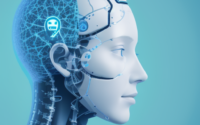Harnessing the Power of AI for Business Efficiency through Process Automation
Harnessing the Power of AI for Business Efficiency through Process Automation
Introduction to AI and Process Automation:
Artificial Intelligence (AI) is revolutionizing the way businesses operate by enabling them to automate various processes. Process automation involves using technology to perform repetitive tasks and workflows, allowing employees to focus on higher-value activities. AI plays a crucial role in process automation by enabling machines to learn, adapt, and make decisions without human intervention.
Benefits of AI in Business Efficiency:
AI offers numerous benefits to businesses looking to improve efficiency through process automation. Some of the key benefits include increased productivity, reduced errors, faster decision-making, improved scalability, and cost savings. By automating routine tasks, AI can free up human resources to focus on tasks that require creativity, critical thinking, and problem-solving skills.
Identifying Processes for Automation:
Before implementing AI-driven automation, businesses need to identify which processes can be automated to achieve maximum efficiency gains. Processes that are rule-based, repetitive, time-consuming, prone to errors, and require minimal human judgment are prime candidates for automation. Common examples include data entry, report generation, customer support, and inventory management.
Choosing the Right AI Tools and Technologies:
Selecting the appropriate AI tools and technologies is crucial for successful process automation. Businesses can choose from a wide range of AI solutions, including robotic process automation (RPA), machine learning, natural language processing, and computer vision. The choice of tools depends on the specific requirements of each process and the desired level of automation.
Implementing AI-Driven Process Automation:
The implementation of AI-driven process automation involves several key steps. First, businesses need to assess their current processes and identify areas where automation can make the most impact. Next, they should select the right AI tools and technologies and develop a strategy for integrating them into existing workflows. It is essential to test the automation processes thoroughly before full deployment to ensure they function as intended.
Monitoring and Optimizing Automation Processes:
Once AI-driven automation processes are in place, businesses must continuously monitor and optimize them to maximize efficiency gains. Monitoring involves tracking key performance indicators (KPIs) to assess the impact of automation on productivity, accuracy, and cost savings. Optimization may involve fine-tuning algorithms, updating data models, and making adjustments based on feedback from end-users.
Challenges and Considerations:
While AI-driven process automation offers significant benefits, businesses also face challenges in implementation. Common challenges include data quality issues, integration complexities, resistance from employees, privacy concerns, and the need for continuous upskilling of workforce. It is essential for businesses to address these challenges proactively and develop strategies to overcome them to ensure successful automation implementation.
Case Studies of AI-Driven Automation Success:
Several businesses across various industries have successfully leveraged AI for process automation to drive efficiency and innovation. For example, a retail company used AI-powered chatbots to automate customer support, reducing response times and improving customer satisfaction. In the healthcare sector, AI algorithms have been deployed to automate medical image analysis, speeding up diagnosis and treatment decisions. These case studies highlight the transformative potential of AI in improving business efficiency through process automation.
Conclusion:
AI-powered process automation is reshaping the way businesses operate by streamlining workflows, reducing manual intervention, and driving efficiency gains. By harnessing the power of AI technologies, businesses can automate routine tasks, optimize decision-making processes, and empower employees to focus on strategic activities. As businesses continue to explore the possibilities of AI-driven automation, they are poised to unlock new levels of productivity, innovation, and competitiveness in the digital era.

